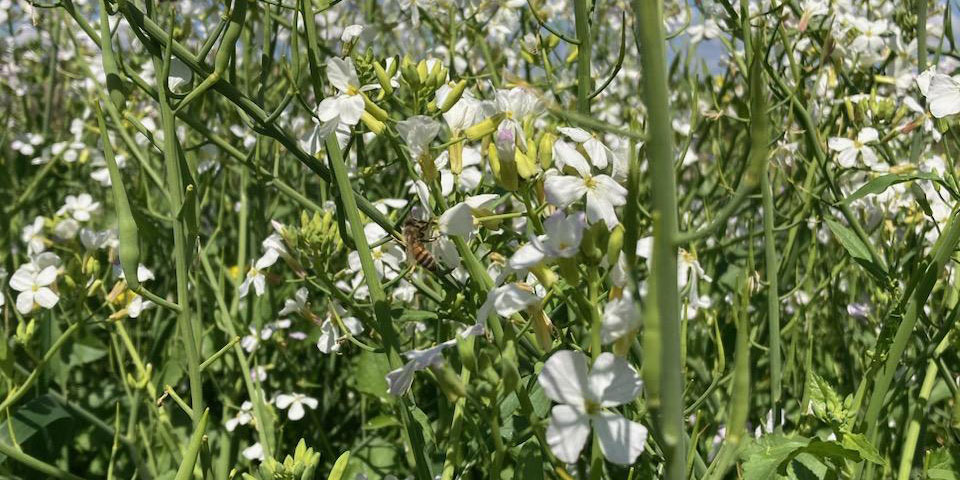An article from Perspectives From the Field
Writing by Carl Evers III, AgIS Capital Director of Sustainability
This winter and spring, the cover crops in our orchards and vineyards have been providing the farms with a multitude of benefits.
While California received high amounts of winter rains, the ground cover stabilized the soil to prevent erosion. Their roots allowed for increased and more even water infiltration to the soil. While they were making use of the water from the rains, they added biomass, fixed nitrogen and nutrients from the air, and provided habitat for soil microbial life in the soil. Our bees used for pollination, as well as native pollinators were able to forage on the pollen from the flowering plants.
Benefits of Cover Crops:
- Stabilized soil to prevent erosion
- Even water infiltration to soil
- Added biomass
- Fixed nitrogen and nutrients from the air
- Habitat for soil microbial life
- Flowering plants for pollinators
- Reduced crop disease risk
- Farmers into field sooner
Benefits of Cover Crops:
- Stabilized soil to prevent erosion
- Even water infiltration to soil
- Added biomass
- Fixed nitrogen and nutrients from the air
- Habitat for soil microbial life
- Flowering plants for pollinators
- Reduced crop disease risk
- Farmers into field sooner
bee hives in an almond orchard
Now that we are into the Spring, the cover crops have stabilized the soils so that they are not water-logged or anaerobic from all of the winter rains. This helps prevent disease risk to the crops and allows us to get into the field sooner to do our farming activities without getting equipment stuck and minimizing the risk of soil compaction.
Whether using naturally occurring vegetation or strategically planted varieties, cover crops and ground cover have an important role to play in a well-managed farm. Learn more about AgIS Capital’s Sustainability efforts on our Responsibility page.






